Philips PUS8359 is a television that captures attention mainly thanks to its three-sided Ambilight system. The adaptive backlighting creates an impressive effect, especially in the evening – the light behind the screen adds atmosphere while watching movies and makes the interior look more interesting. It’s a really cool addition, especially if we enjoy unconventional solutions. For gamers, this model can be a good starting choice. The low input lag of less than 10 ms ensures quick responses, while the Automatic Game Mode adjusts the settings to make gameplay smooth. If we play occasionally, the TV does the job, but it’s probably not equipment for those looking for top-notch experiences. When it comes to everyday use, it’s not ideal. The Titan OS looks simple, but it lacks many popular apps, which can be frustrating. Additionally, the interface can run slower than we’d like – switching apps or jumping between settings may sometimes require patience. If we’ve previously used more advanced systems like Android TV, Titan OS may disappoint us significantly. And what about picture quality? Here lies the problem. The panel offers average brightness and low contrast, so in bright rooms, the picture can look washed out. In darker scenes, blacks become more grey, which takes away details. HDR? Don’t expect great effects – the lack of Dolby Vision and limited technical capabilities mean that HDR content doesn’t make a significant impression. Philips PUS8359 is a television that works well for Ambilight fans and those looking for basic features. It performs decently in gaming, and evening viewings with the impressive backlighting will gain an extra atmosphere. However, if we care about high picture quality or an advanced Smart TV system, it’s worth looking at other models. This TV is a suggestion for those who don’t expect too much and want something simple with an interesting visual effect.
- Matching (Score)
- Our verdict
- TV appearance
- Where to buy
- Contrast and black detail
- HDR effect quality
- Factory color reproduction
- Color reproduction after calibration
- Smoothness of tonal transitions
- Image scaling and smoothness of tonal transitions
- Blur and motion smoothness
- Console compatibility and gaming features
- Input lag
- Compatibility with PC
- Viewing angles
- TV efficiency during daytime
- Details about the matrix
- TV features
- Apps
- Playing files from USB
- Sound
Philips PUS8359 (IPS) vs XIAOMI A PRO 2026
Direct compare
PUS8359 / PUS8349

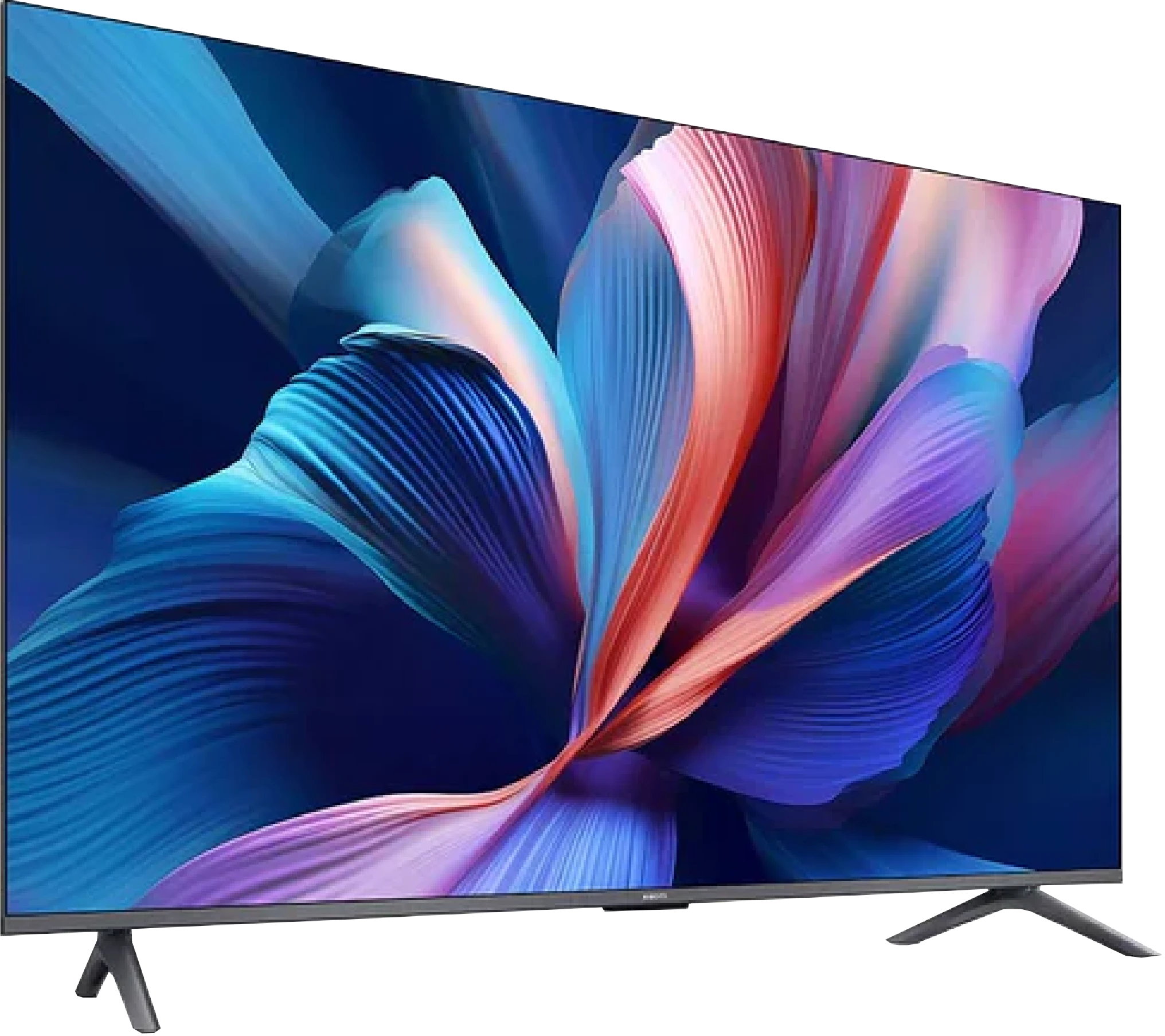
Panel type: LCD IPS
Resolution: 3840x2160
System: Titan OS
Model year: 2024
Complete the survey to find out the result

Panel type: LCD VA
Resolution: 3840x2160
System: Google TV
Model year: 2025
Complete the survey to find out the result

Overall rating
5.1
5.6
Movies and series in UHD quality
4.4
6.0
Classic TV, YouTube
4.5
5.7
Sports broadcasts (TV and apps)
4.6
4.7
Gaming on console
6.2
6.2
TV as a computer monitor
6.0
2.0
Watching in bright light
4.3
4.9
Utility functions
5.3
6.1
Apps
6.2
9.6
Sound quality
6.1
5.0
Complete the survey to find out what fits your preferences
Advantages
Ambilight 3
Illuminated remote control
Basic features for gamers
Low input lag
Support for all audio formats (Dolby and DTS)
VA panel with good native contrast and decent blacks
Supports Game Boost mode at 120 Hz in 1080p and 1440p
Low input lag in 120 Hz mode
Google TV – vast selection of apps and services
Wide colour gamut coverage (around 94% DCI-P3)
Good colours after calibration in SDR mode
Supports popular audio formats (Dolby Atmos, DTS:X)
Large, easy-to-read remote with numeric keypad – convenient for seniors
Disadvantages
Poor black and contrast
Average brightness
Limited TitanOS system
Low brightness
Lack of real support for HDR10+ and other more advanced HDR formats (e.g., Dolby Vision)
Significant limitations when working with PC – no chroma 4:4:4, heavy dithering, poor font readability
Poor viewing angles (typical for VA)
Clunky build, legs mounted in plastic with screws
Weird system issues – stuttering, errors with Miracast and sound switching
Upscaling and digital image processing is virtually non-existent
Very weak sound, practically no bass (we felt it performed worse than the "2025" model)
Our verdict
Xiaomi A Pro 2026 is a television that, at first glance, doesn’t reveal significant changes compared to its predecessor. Someone might even think it’s just a copy of last year's model with a different sticker. And there’s some truth to that, as the main novelty, or rather the only noticeable difference, is the 120 Hz mode at lower resolutions. It must be said that Xiaomi has done well here; this addition really makes a difference – it’s not a solution for professional gamers, but a nod towards those looking for a smoother image during casual gaming. This is where the A Pro 2026 can stand out – with a simple yet clever idea that sets it apart in the “super budget” segment. Unfortunately, when we start looking at the television more broadly, the enthusiasm quickly wanes. Even though the year has changed on the calendar, most of the issues known from the A Pro 2025 are still with us – the system can still experience strange stutters, and the occasional errors can be quite frustrating. On top of that, there's a lack of any serious digital image processing tools, which worked quite decently last year. As a result, there are many limitations in the design that the competition in a similar price range is already trying to cover up in some way. When it comes to image quality, we won't sugarcoat it either. Brightness at the level of 200–300 nits doesn’t stand a chance against more demanding content. Sure, with simpler streaming content, you can watch something, but with high-budget productions, it’s immediately clear why the television costs what it does. The impression that we are viewing a flat image stripped of details accompanies us pretty much every time. And this brings us to the crux of the matter. The Xiaomi A Pro 2026 is a television for those who really don’t demand much. As a daily screen for series, news, or YouTube, it performs decently, especially thanks to its operating system, which is GoogleTV. Also, if someone is looking for budget equipment and would additionally like a taste of smoother gameplay in games thanks to the 120 Hz mode, they might even be satisfied. However, anyone expecting at least average image quality, a stable system, and proper functionality will soon notice that there are other budget models on the market that simply perform better.
TV appearance





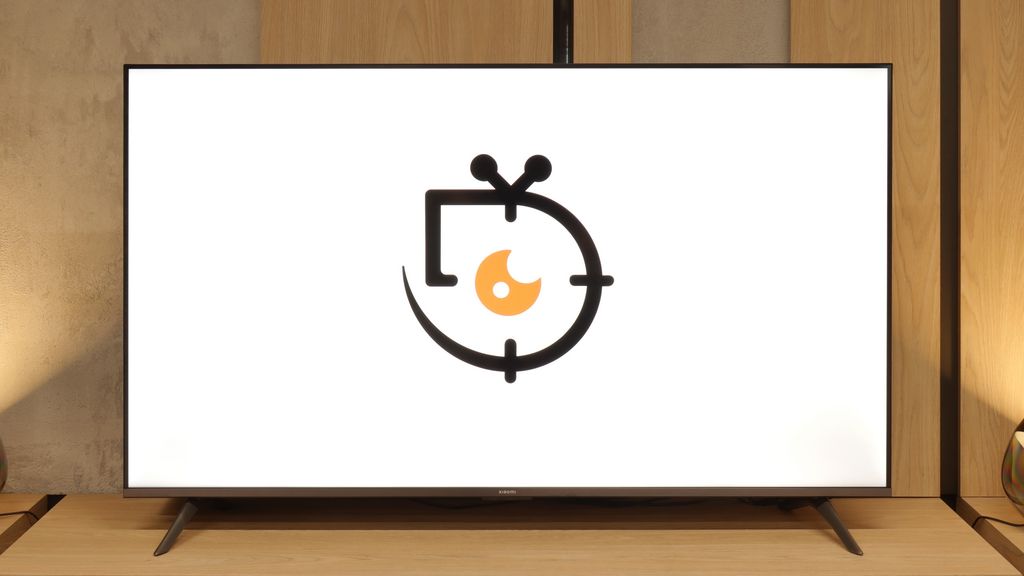
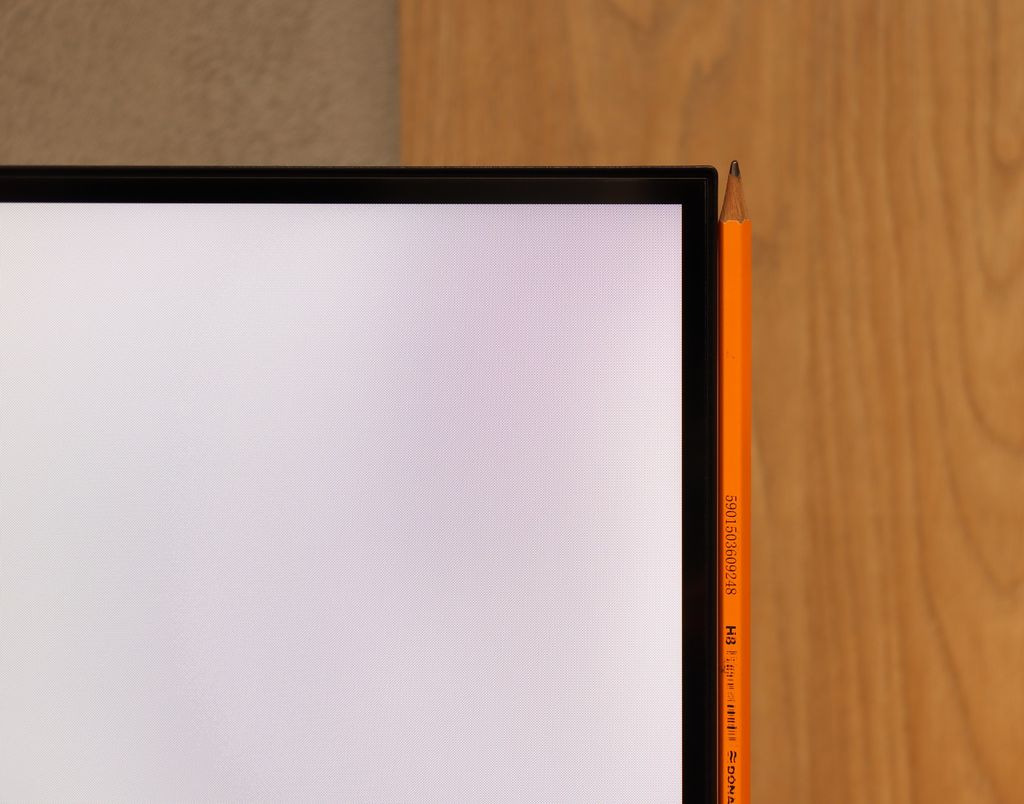
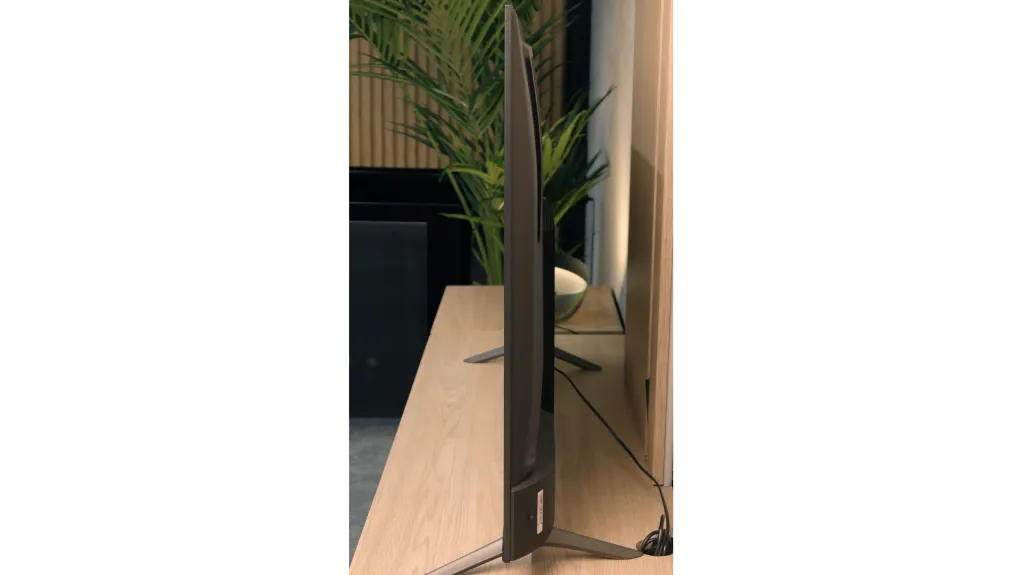
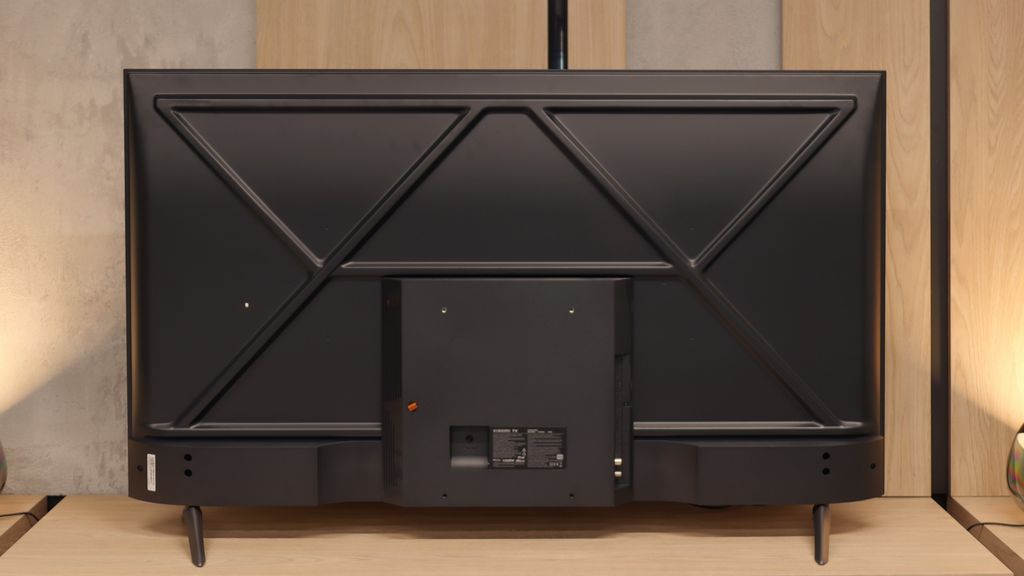
Contrast and black detail
1.9/10
6.1/10
Local dimming function: No
Local dimming function: No
Contrast:

Result
1,000:1

Result
1,050:1

Result
900:1

Result
1,050:1

Result
850:1

Result
5,000:1

Result
6,550:1

Result
7,300:1

Result
6,600:1

Result
4,900:1
Halo effect and black detail visibility:



Philips PUS8359/12 in the 55" and 43" versions is based on an IPS panel, which significantly affects the contrast quality. Unfortunately, test results clearly show a very low level. The blacks, instead of resembling deep tar, appear more like silver ash, which is especially noticeable when watching dark scenes. Such a level of contrast limits the ability to fully enjoy the image, particularly for those who prefer viewing in dimly lit rooms.
One of the biggest advantages of even a budget construction like the Xiaomi A Pro 2026 is the VA panel it uses. This is responsible for quite decent contrast, which in our measurements oscillated between 5000:1 and 7000:1. On the screen, this translates to a stable image with fairly deep blacks – something that's hard to find in competing models with IPS panels without local dimming. Xiaomi has also added a global dimming function for the entire panel. It sounds good, but… we advise turning it off straight away. Why? Because the screen behaves very strangely in darker scenes – sometimes it dims so much that you can hardly see anything, and other times it brightens so much that the already dark blue-black turns into a bright blue. At those moments, it felt as if the TV was simply damaged. Fortunately, without this function, the contrast looks really solid. It’s definitely not on the level of advanced TVs with local dimming, but in its price range, it will easily satisfy most users – especially if you’re not watching in a completely dark room and have at least some background light that effectively masks the imperfections of the "blue-black".
HDR effect quality
3.7/10
4.1/10
Luminance measurements in HDR:

Result
240 nit

Result
225 nit

Result
285 nit

Result
236 nit

Result
280 nit

Result
220 nit

Result
248 nit

Result
322 nit

Result
315 nit

Result
326 nit
Scene from the movie “Pan” (about 2800 nits)


Scene from the movie “Billy Lynn” (about 1100 nits)


Static HDR10


Dynamic: HDR10+
Dynamic: HDR10+


HDR luminance chart:
XIAOMI A PRO 2026
HDR luminance
Philips PUS8359 (IPS)
HDR luminance
The quality of the HDR effect on the Philips PUS8359/12 television is also not impressive. A brightness level of 280 nits is too low, resembling standard SDR more than true HDR, which is clearly evident on the five tested test cards. Additionally, the television does not impress in terms of colour gamut coverage – just 76% DCI-P3 is a result that can be considered poor, especially compared to other models in a similar price range.
If you're counting on the cinematic HDR experience in the new Xiaomi A Pro 2026, it's best to temper your expectations. This TV is simply too dim to fully realise the potential of contemporary films or series designed for the highest quality image. Our measurements showed brightness levels in the range of 200–300 nits, which are values that are more suited to SDR content than to ambitious HDR productions. In practice, this means that while most films look decent, they certainly won't evoke the 'wow' effect that other TVs do. Fortunately, not everything is lost – credit has to be given to the PFS LED filter used here, a solution similar to the quantum dot technology found in QLEDs. Thanks to this, the coverage of the DCI-P3 colour palette reaches about 94%, resulting in vibrant, saturated colours in the vast majority of materials.
Factory color reproduction
4/10
3.5/10


Factory Mode
After calibration


Factory Mode
After calibration
The most faithful factory mode in terms of compliance with the source material turned out to be "Film," which was used in our tests. However, like other factory modes, it also had its drawbacks. Both in SDR and HDR materials, we noticed issues with white balance, where the dominance of green and red resulted in a yellowish hue. This effect was particularly evident in the form of yellowed whites and unnatural skin tones. The "ColourChecker" palette test showed that each colour was shifted towards warmer tones, which affected the accuracy of colour reproduction. A key aspect of the image is also contrast and brightness, which can be assessed by analysing the gamma charts and the EOTF curve. In the gamma chart, we observed significant deviations – both excessively high values that caused loss of detail in the shadows and excessively low values, which led to a drastic drop in contrast. Compared to gamma, the EOTF curve performed better, only slightly brightening the image, which had a less negative impact on overall quality.
What we saw in Filmmaker mode really surprised us – and unfortunately not in a good way. The mode advertised as the Hollywood standard resembled more of a display in a shop window. The white balance was shifted towards blue, which led to massive colour errors and the effect of blown-out scenes in SDR content. It was a bit better, though far from perfect, in HDR materials. There were also problems there – colour saturation and the entire palette consistently drifted towards cooler tones, resulting in an image that had an artificial, cold tint rather than a cinematic character. In other words: even in Filmmaker mode, which should be the showcase of this television, we got an effect far from expectations.
Color reproduction after calibration
5/10
7/10




Philips, in both its cheaper and more expensive models, offers a wide range of tools for image calibration. We used them to improve the quality of the displayed image, although it was not as straightforward as it might seem. We managed to adjust the white balance, improve the gamma, and fine-tune the EOTF curve; however, despite these efforts, the deltaE errors remained at a very high level. The main causes were limited coverage of the DCI-P3 palette and low maximum brightness, which significantly affected the final outcome. While the overall presentation is much improved, the design features of the television did not allow us to achieve spectacular results.
Even though Xiaomi isn't a brand associated with top-tier televisions, it's fair to say that even in a budget model like the A Pro 2026, the manufacturer left plenty of calibration settings. After a few adjustments, the SDR picture took on a completely new look. The colours stopped veering into blue tones, the whites gained a sense of naturalness, and most errors dropped to a practically invisible level. As a result, SDR content looked very good, surprisingly so for this price range.
It was a slightly different story with HDR materials. Here, it was immediately noticeable what we had already mentioned – the overexposure of bright scenes and issues with balance control. Calibration helped only partially, as the limitations of the panel itself were at play. However, it must be emphasized that in the case of SDR, the television changed beyond recognition, and definitely for the better.
Smoothness of tonal transitions
8.4/10
9.3/10












The gradation of tonal transitions on the Philips PUS8359/12 television is at a good level, without any noticeable issues that could negatively affect the quality of content viewing. Upon closer inspection, one might notice slight imperfections in bright, colourful transitions; however, they are subtle enough that most users should not notice them or consider them a problem.
The television really handles colour blending well, and in most scenes it's hard to spot any imperfections. This is best showcased in the brighter parts of films, where tonal transitions look almost perfect, and the image is smooth and natural. Darker scenes are somewhat less impressive, where the characteristic banding can be seen. Fortunately, this isn't a flaw that stands out, and for most viewers, it will remain virtually unnoticeable.
Image scaling and smoothness of tonal transitions
6/10
3/10
Smooth transition function

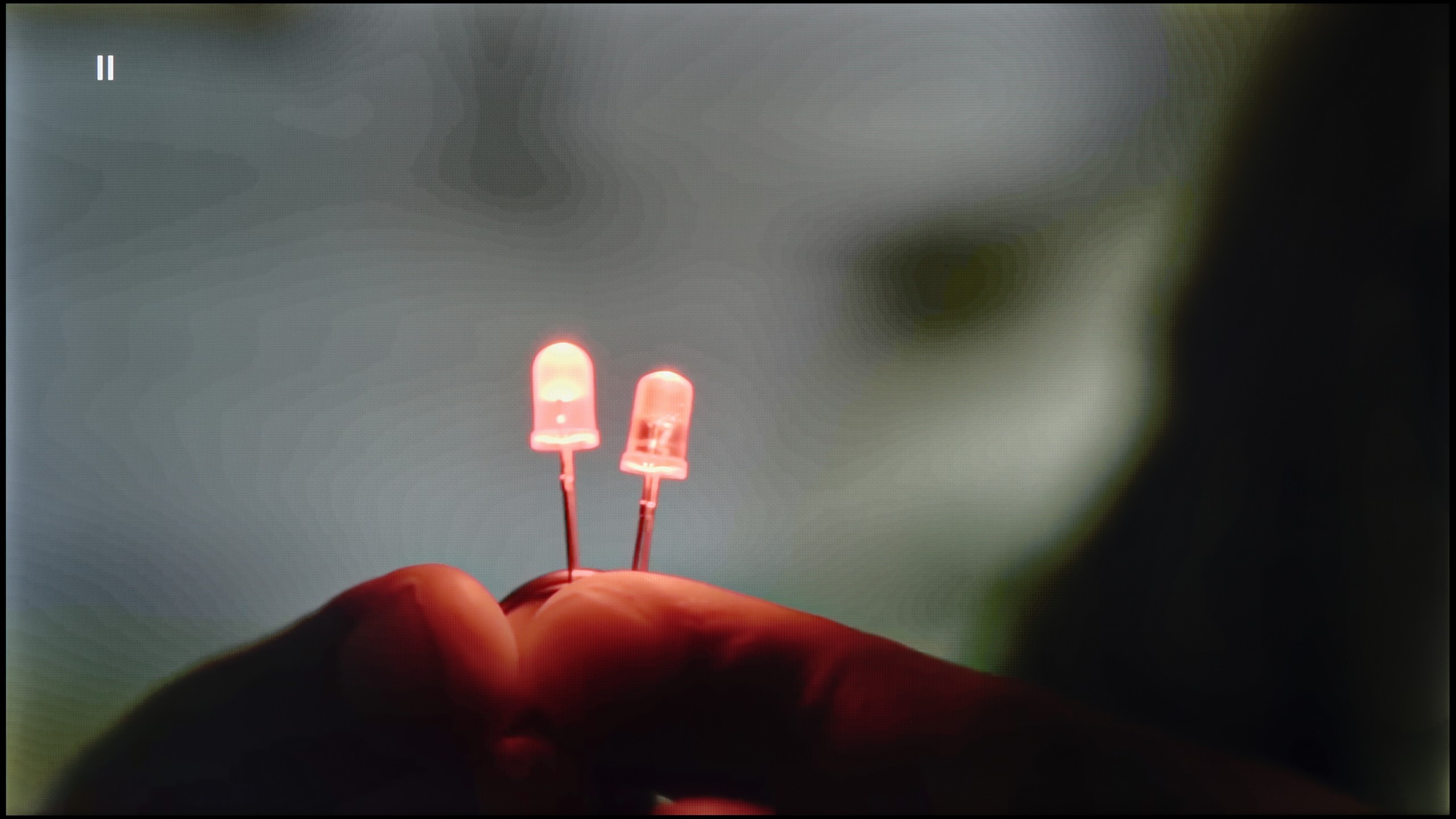
Image without overscan on the SD signal


In this paragraph, we'll take a look at two functionalities. We'll once again examine the function responsible for tonal transitions, but we'll also check how the television handles image scaling. The option responsible for smooth gradation is called "Distortion Reduction". As we've established, it does a pretty good job of smoothing out inconsistencies. However, we must point out two things: we are unable to enable it for HDR content, and it blurs details in films.
The television being tested cannot boast the best image scaling. There is a noticeable overall blurriness in the image, but worse still, it blurs details. This is particularly evident on the branches and the model's hair. A characteristic white halo around the figures is also visible.
Upscaling and digital image processing in the Xiaomi A Pro 2026 are not among the model's strong points. One might expect that since the television was not designed to achieve record brightness levels, the manufacturer would have opted for a more robust processor and a set of features that would "enhance" lower quality images. Unfortunately – we were also met with significant disappointment here. On the plus side, it has reasonably decent upscaling, which handles HD content and boosts it to 4K in an acceptable manner. However, that is where the list of advantages ends. The television does not offer any features to improve tonal transitions or smooth out digital imperfections, so in most cases, we receive a raw image, exactly as we deliver it from an external source. On a large screen, this lack of support makes lower quality content look simply bland. An additional problem is the phenomenon of overscan. When watching older material, it happens that part of the image is cut off, which only intensifies the impression that Xiaomi has quite a bit of catching up to do in this category.
Blur and motion smoothness
4/10
4.5/10

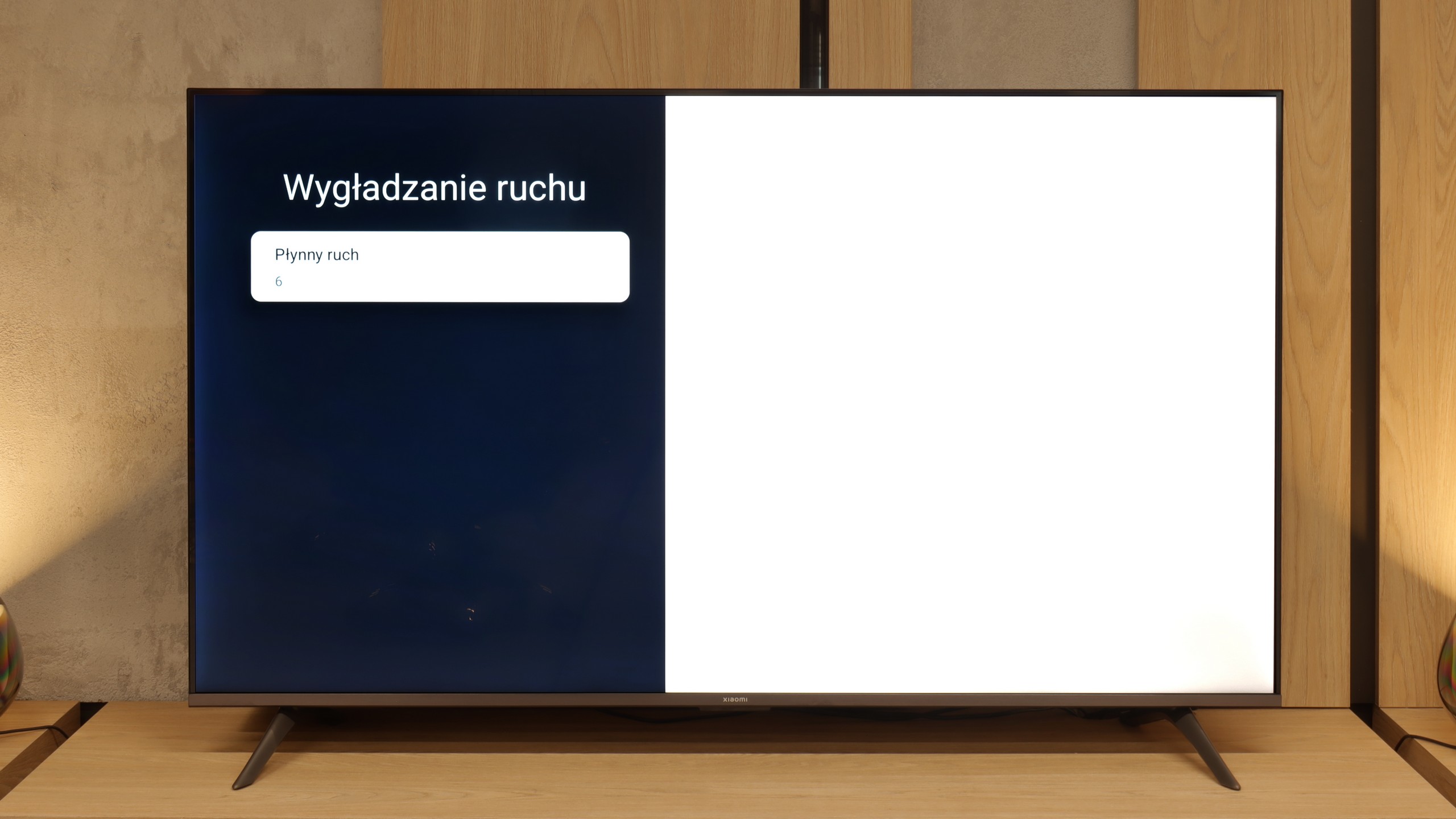
Blur (native resolution, maximum refresh rate):






Blur (BFI function enabled):



Smużenie ():
Smużenie (1440p@120Hz):



Philips PUS8359 is not the best choice for watching sports. The lack of even basic motion smoothing features means that the picture in dynamic scenes isn't sharp enough. Despite using an IPS panel (43 and 55'), which theoretically should provide better clarity than VA panel variants, there’s no noticeable improvement in terms of motion blur. In photos of fast movement, it’s clear that the figure of the little green man is distinctly blurry, indicating that the TV struggles to maintain sharpness in dynamic shots.
The motion fluidity in the Xiaomi A Pro 2026 is an interesting compromise that results from the hybrid matrix used here. At a native resolution of 4K, the maximum refresh rate is 60 Hz – sufficient for those who mainly watch movies and series. It is with them in mind that the manufacturer added a motion smoother, allowing users to adjust the image to their own preferences – one can opt for greater fluidity or leave it with more "cinematic" frames depending on the settings.
Console compatibility and gaming features
4.7/10
3.6/10
- ALLM
- VRR
- VRR range48 - 60Hz
- Dolby Vision Game Mode
- Correct implementation of HGIG
- 1080p@120Hz
- 1440p@120Hz
- 4K@120Hz
- Game bar

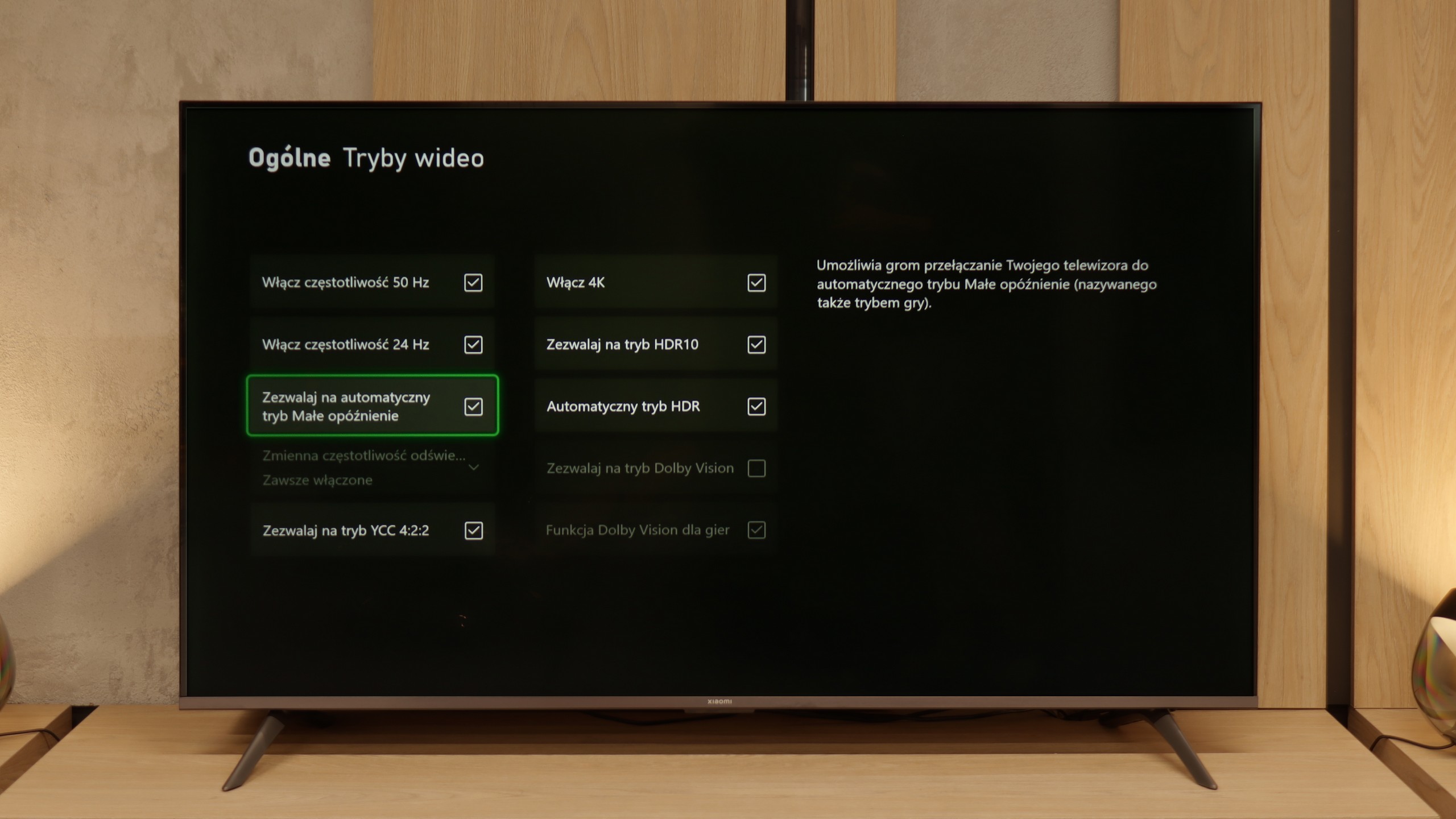

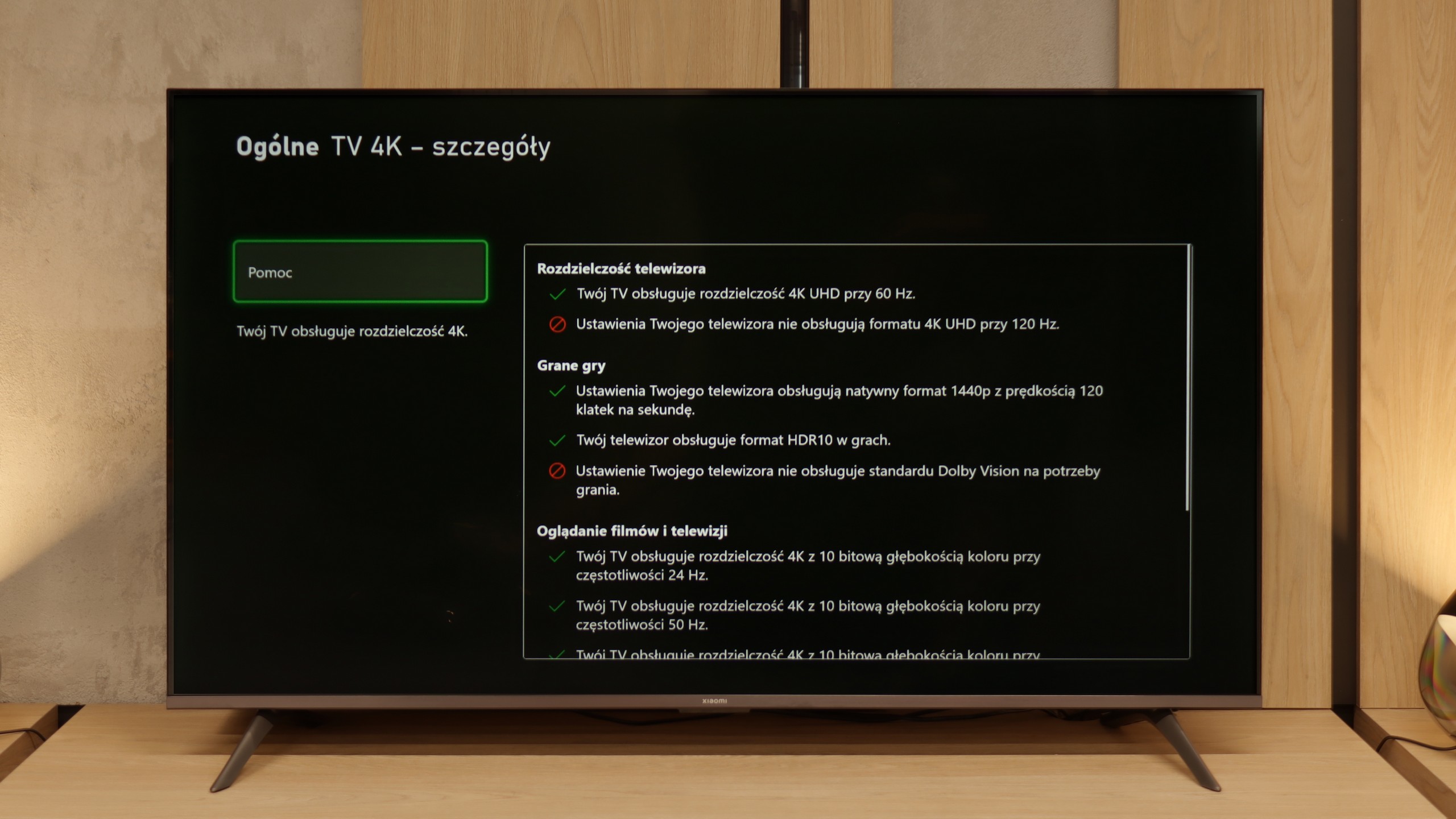

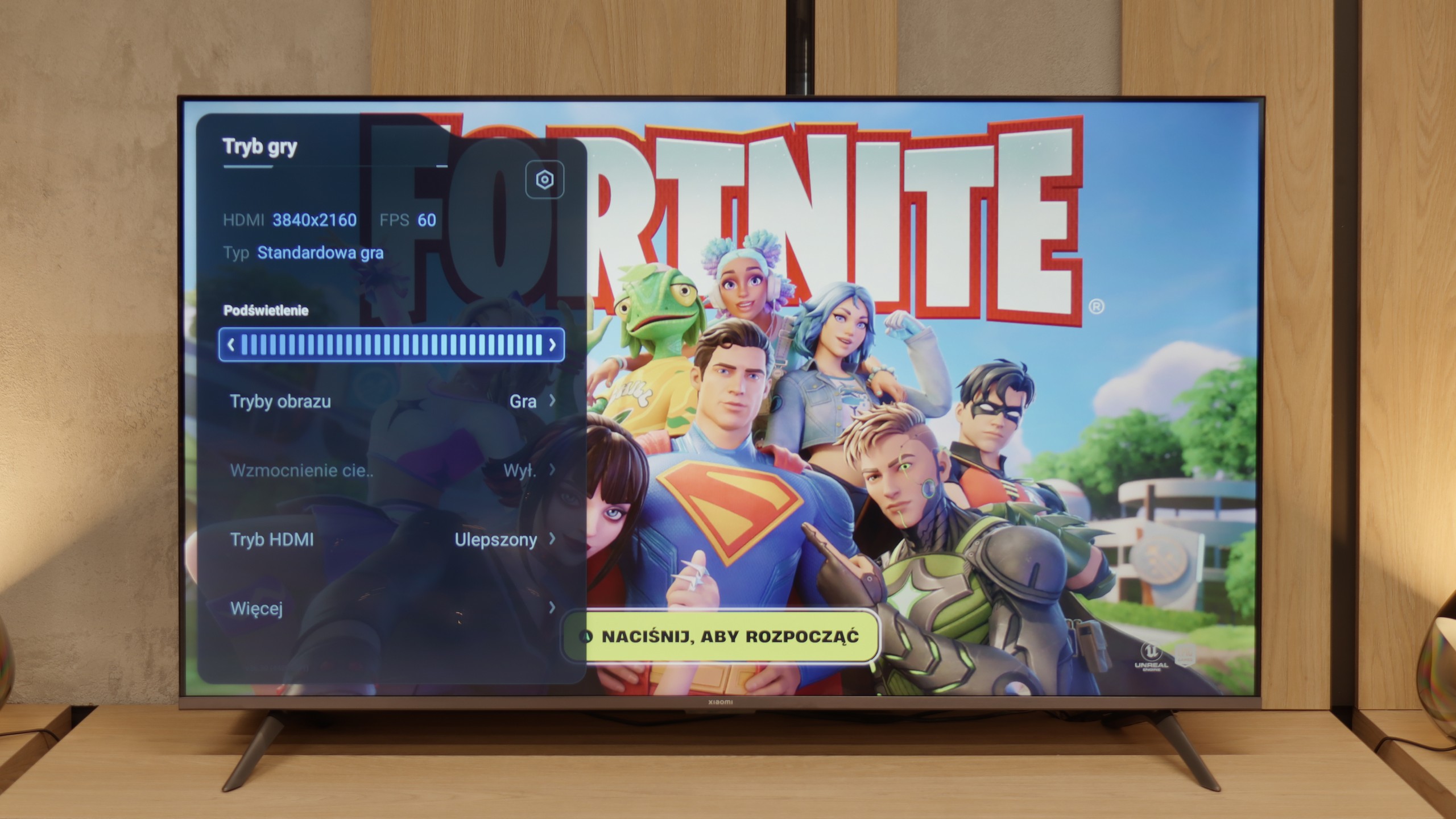

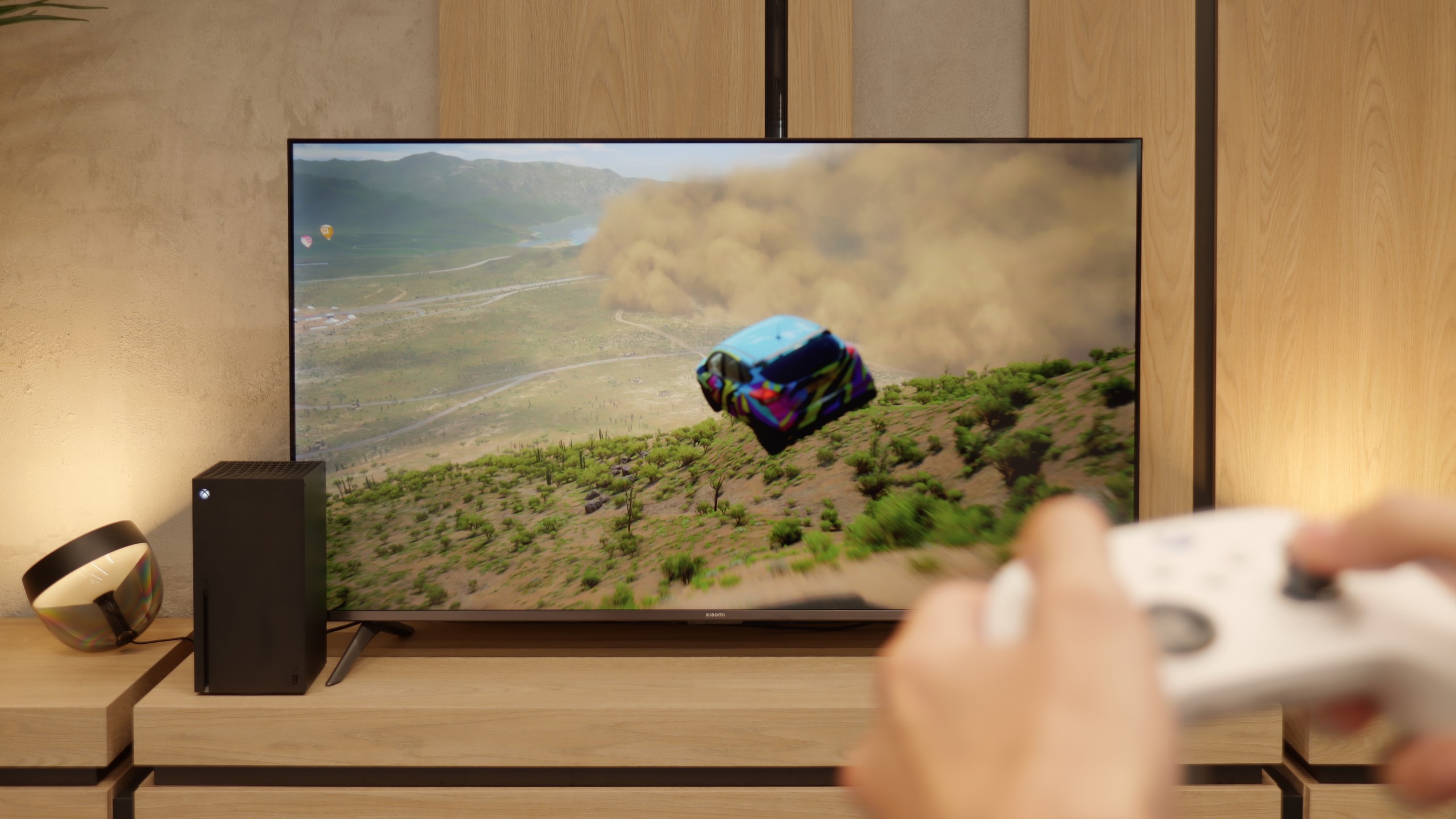
In terms of console compatibility, Philips PUS8359 is mainly suitable for casual gamers. Although the TV is equipped with an HDMI 2.0 port, it offers features such as Automatic Low Latency Mode (ALLM), Variable Refresh Rate (VRR), and Game Bar. ALLM automatically switches the TV to low-latency mode, making quicker reactions during gaming easier, while VRR smoothly adjusts the refresh rate, eliminating screen tearing issues. The Game Bar provides quick access to game settings and ongoing parameter monitoring; however, in our opinion, it performs worse compared to competitors' solutions.
However, more demanding gamers may feel disappointed. Philips PUS8359 does not support advanced HDR formats in games or higher refresh rates, which is due to the use of a 60 Hz panel. These shortcomings limit the TV’s ability to deliver smooth and detailed experiences during fast-paced, dynamic gameplay.
No indeed – since Xiaomi has added the "Game Boost 120 Hz" feature here, one might expect that they'd follow up with a solid gaming package. Unfortunately, reality quickly dampens that enthusiasm. Aside from this mode (which, it must be said, is a great addition in a budget build), we only have a rather peculiar player panel. It's hard to call it a full-fledged "game bar" – it's more of a simple overlay on the TV's Menu with limited options. And that’s about it. There’s no ALLM, so the TV won’t switch to game mode automatically. There’s no VRR, so you can forget about smooth frame synchronisation. We also won’t find support for Dolby Vision in games or the HGiG format, which are increasingly becoming the standard on consoles. In short: apart from Game Boost 120 Hz, which indeed allows for a more enjoyable experience at 1080p or 1440p, Xiaomi A Pro 2026 offers nothing that particularly appeals to gamers.
Input lag
10/10
9.5/10
SDR
HDR
Dolby Vision
Philips PUS8359 offers an exceptionally low input lag of below 10 ms, which is a fantastic result. This makes the television perfect for dynamic gaming, providing quick responses and smooth gameplay, which will surely be appreciated by both casual and more demanding gamers.
Input lag on the Xiaomi A Pro 2026 is quite decent and definitely isn't its weak point. The best results were achieved in 1080p@120 Hz and 1440p@120 Hz modes – there the TV drops below 10 ms, which can easily be called a phenomenal result and sufficient even for more demanding gamers. The situation changes with 60 Hz content – input lag then increases to around 25 ms. These might not be the best figures on the market, but for casual gaming or firing up the console in the evening, they will be fully acceptable. Especially since in most cases, it’s worth activating the 120 Hz mode, which is the most beneficial for gamers.
Compatibility with PC
6/10
2/10

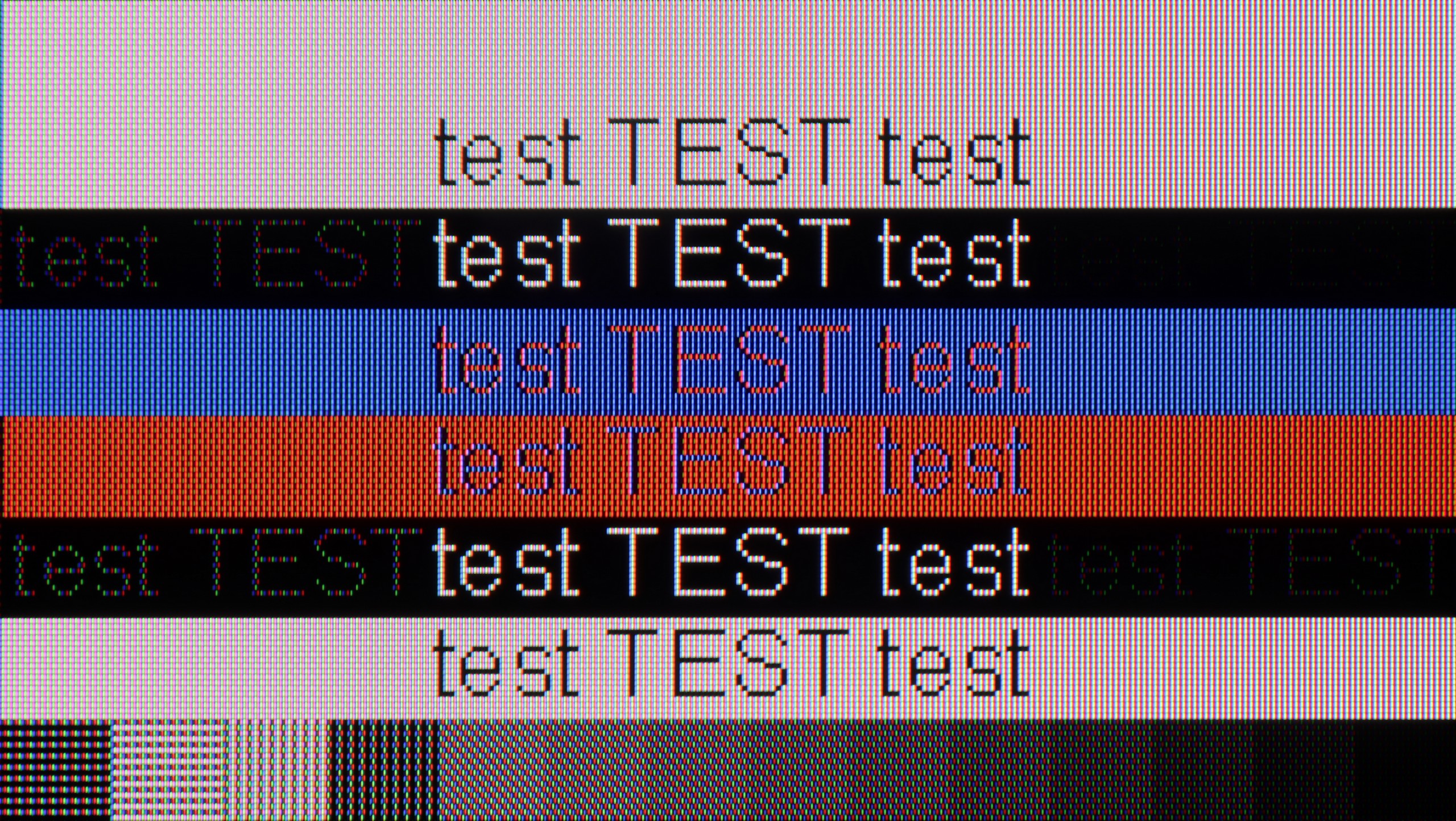
The Philips PUS8359/12 TV with an IPS panel offers quite good font readability thanks to 4:4:4 chroma support, making it suitable for office work and everyday computer use. Although the low input lag makes it friendly for gamers in terms of response time, the lack of support for G-Sync and the 60 Hz panel might not meet the expectations of more demanding users. For those looking for a gaming TV, this could be a compromise – quick response is present, but the absence of higher refresh rates and adaptive image sync affects the rating in the gaming category.
Xiaomi A Pro 2026 as a computer monitor? There's no beating around the bush – it’s very poor. While you can still utilise the 120 Hz mode in lower resolutions for gaming, the TV is completely unsuitable for everyday work. It lacks full support for chroma 4:4:4, so fonts appear blurred, and sometimes even rainbow-like. Additionally, there's strong dithering, which makes the image look uneven – some pixels shine brighter while others dimmer, and vertical lines can even break apart. In practice, this means that text (especially coloured and on dark backgrounds) becomes difficult to read. Light text manages to hold up somewhat, but it’s hard to talk about any real comfort. In this category, we give the Xiaomi A Pro 2026 a score of 2/10 (+1 for the additional high refresh rate mode), and there’s really no sense in elaborating on this further.
Viewing angles
6.3/10
3/10
The viewing angles on the Philips PUS8359 TV are quite good, thanks to the IPS panel used (43' and 55'). The image remains clear and distinct even when viewed from a greater angle, which is beneficial when watching content with a larger group or in rooms with an unconventional layout.
The Xiaomi A Pro 2026 features a VA panel, which immediately suggests that viewing angles are not its strong suit. When looking at the screen from the side, you will quickly notice a loss of quality – colours noticeably fade, and the whole image appears washed out. The drop in brightness may not be as drastic as in some constructions based on similar technology, but that doesn’t change the fact that it’s clearly a weak point of this model. If we plan to use it as a large, cheap screen for the lounge, one must take this limitation into account.
TV efficiency during daytime
4.3/10
4.9/10

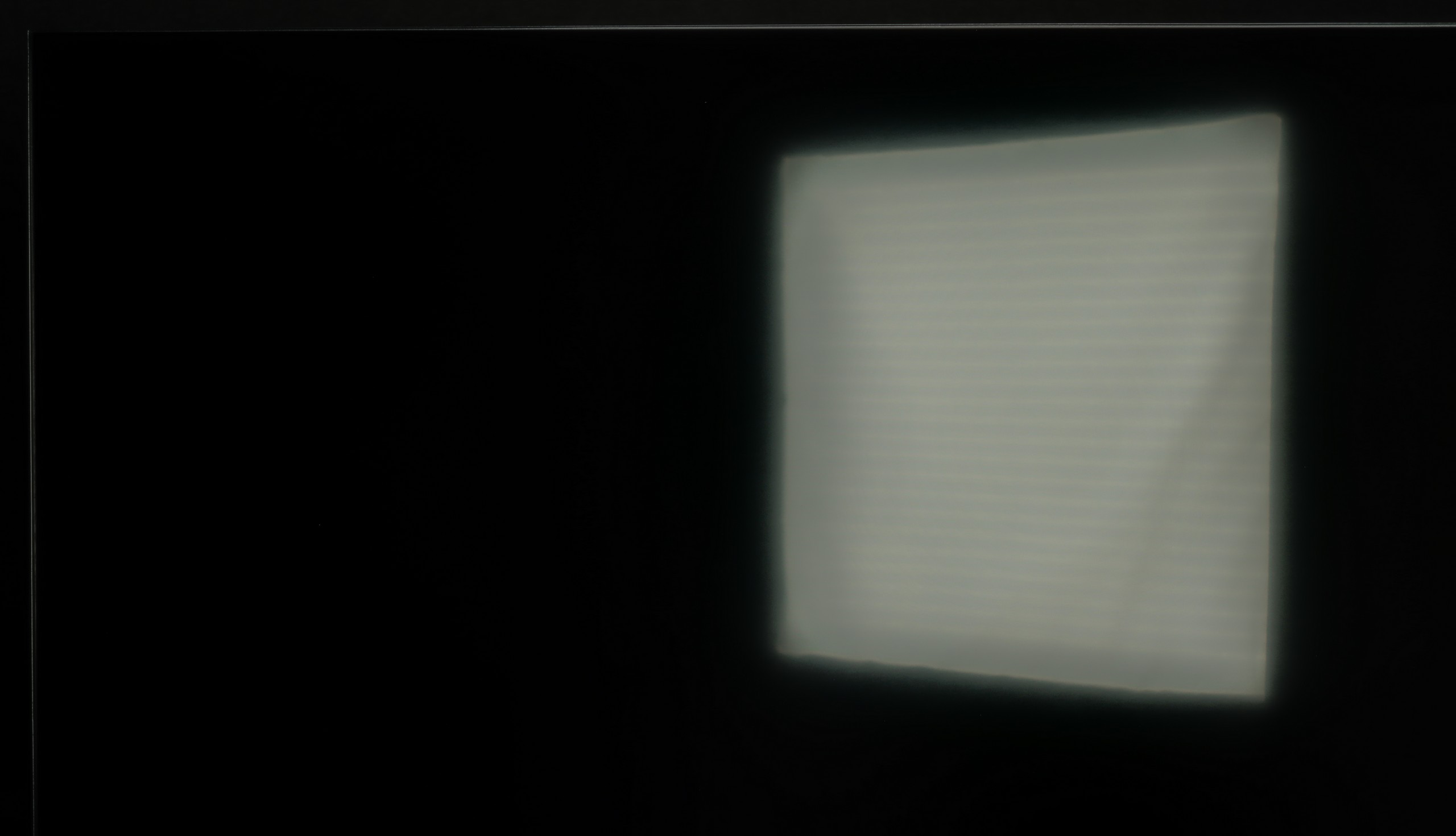


Matrix brightness
Average luminance SDR
XIAOMI A PRO 2026: 334 cd/m2
Philips PUS8359 (IPS): 305 cd/m2
In terms of performance during the day, Philips PUS8359 performs average. The satin matrix coating moderately suppresses reflections, which may be noticeable in bright rooms. A brightness level of 300 cd/m² is acceptable in this price range, but one should not expect exceptional results in more challenging lighting conditions.
The Xiaomi A Pro 2026 performs quite well during the day. The display has a satin finish that helps reduce reflections, so colours don’t lose their vibrancy, even when the room is bright. Just bear in mind that it’s not an extremely bright screen – the average brightness is around 350 nits. In an ordinary, moderately sunny living room, it’s sufficient, but if you have large windows that let in a lot of sunlight, it might simply be tough without blinds or curtains.
Details about the matrix
Subpixel Structure:

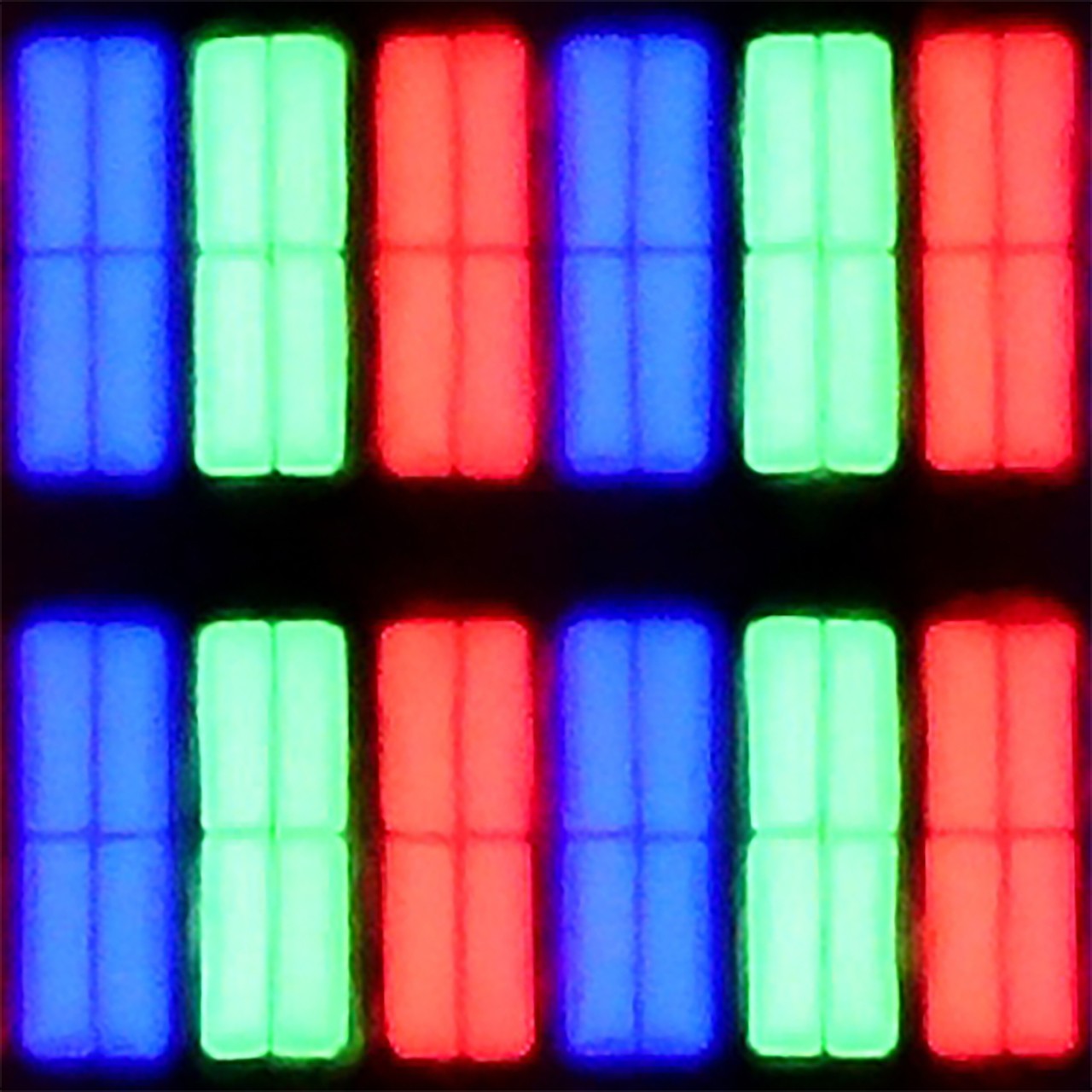
Panel uniformity and thermal imaging:
Philips PUS8359 (IPS)
XIAOMI A PRO 2026
TV features
5.3/10
6.1/10
- HDMI inputs3 x HDMI 2.0, 0 x HDMI 2.13 x HDMI 2.0, 0 x HDMI 2.1
- Other inputsRCA (Chinch)
- OutputsToslink (Optical audio), eARC (HDMI), ARC (HDMI), Mini-Jack (Headphones)Toslink (Optical audio), eARC (HDMI), ARC (HDMI), Mini-Jack (Headphones)
- Network InterfacesWi-Fi 2.4GHz, Wi-Fi 5GHz, Ethernet (LAN) 100MbpsWi-Fi 2.4GHz, Wi-Fi 5GHz, Ethernet (LAN) 100Mbps
- TV receptionDVB-T, DVB-T2, DVB-S, DVB-S2, DVB-CDVB-T, DVB-T2, DVB-S, DVB-S2, DVB-C
Classic features:
- Recording to USB (terrestrial TV)
- Recording programming
- Picture in Picture (PiP)
- RF remote control (no need to aim at the screen)
- Backlit remote control
- Teletext
- Audio only mode
- Bluetooth headphones support
- Simultaneous Bluetooth headphones & TV audio
Smart features:
- AirPlay
- Screen mirroring (Windows Miracast)
- Voice search
- Voice search in native language
- Ability to connect a keyboard and mouse


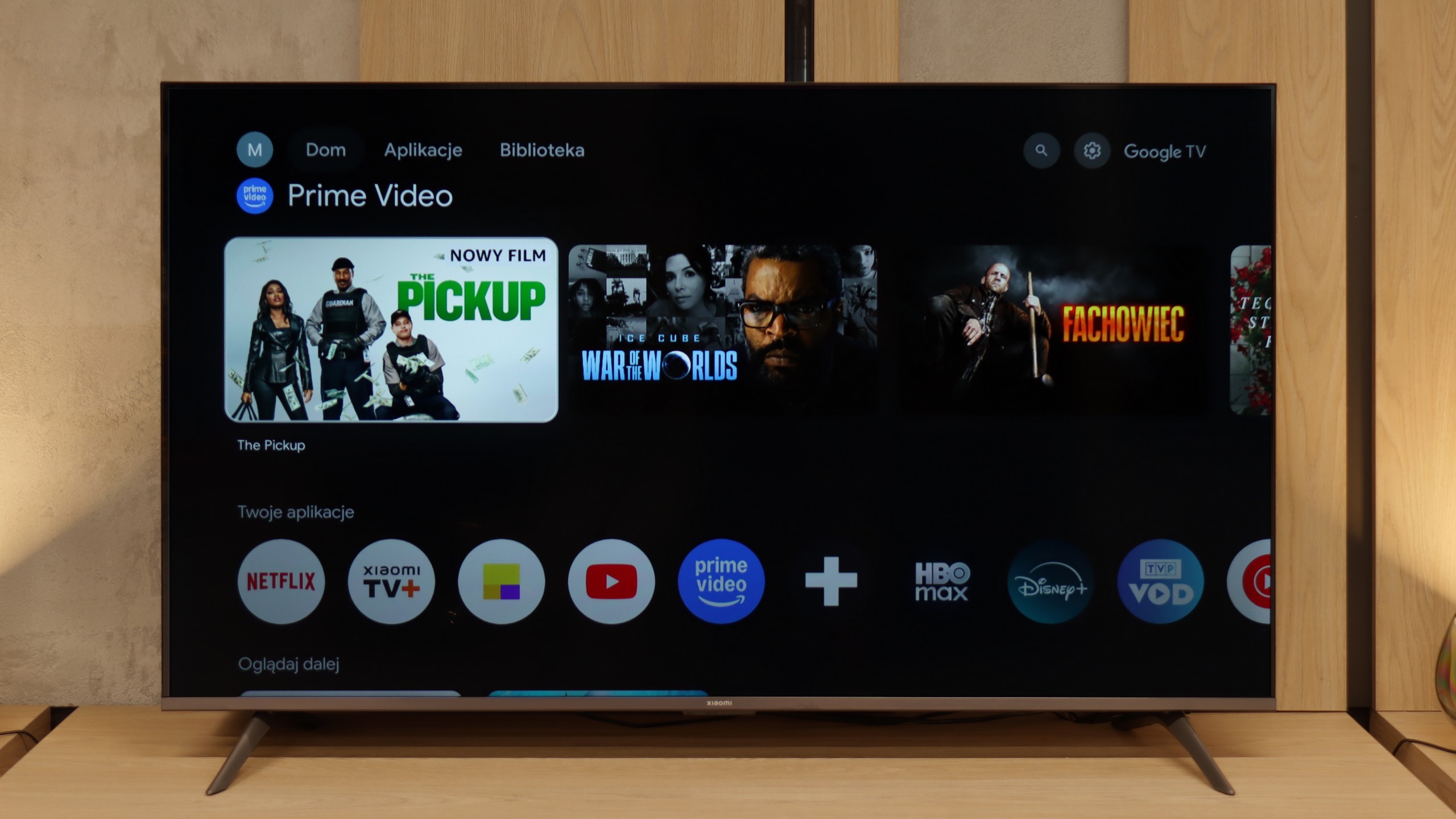
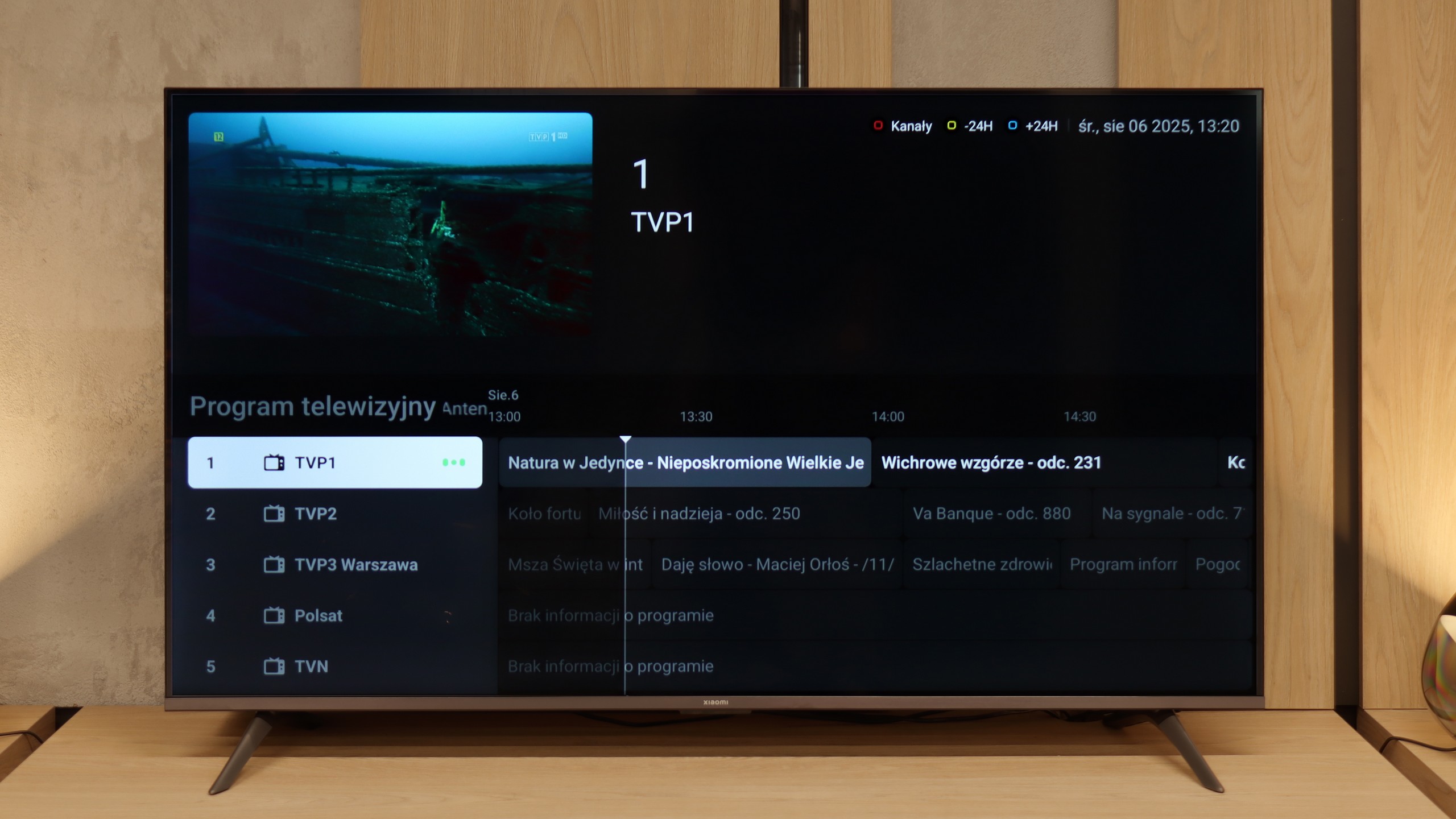
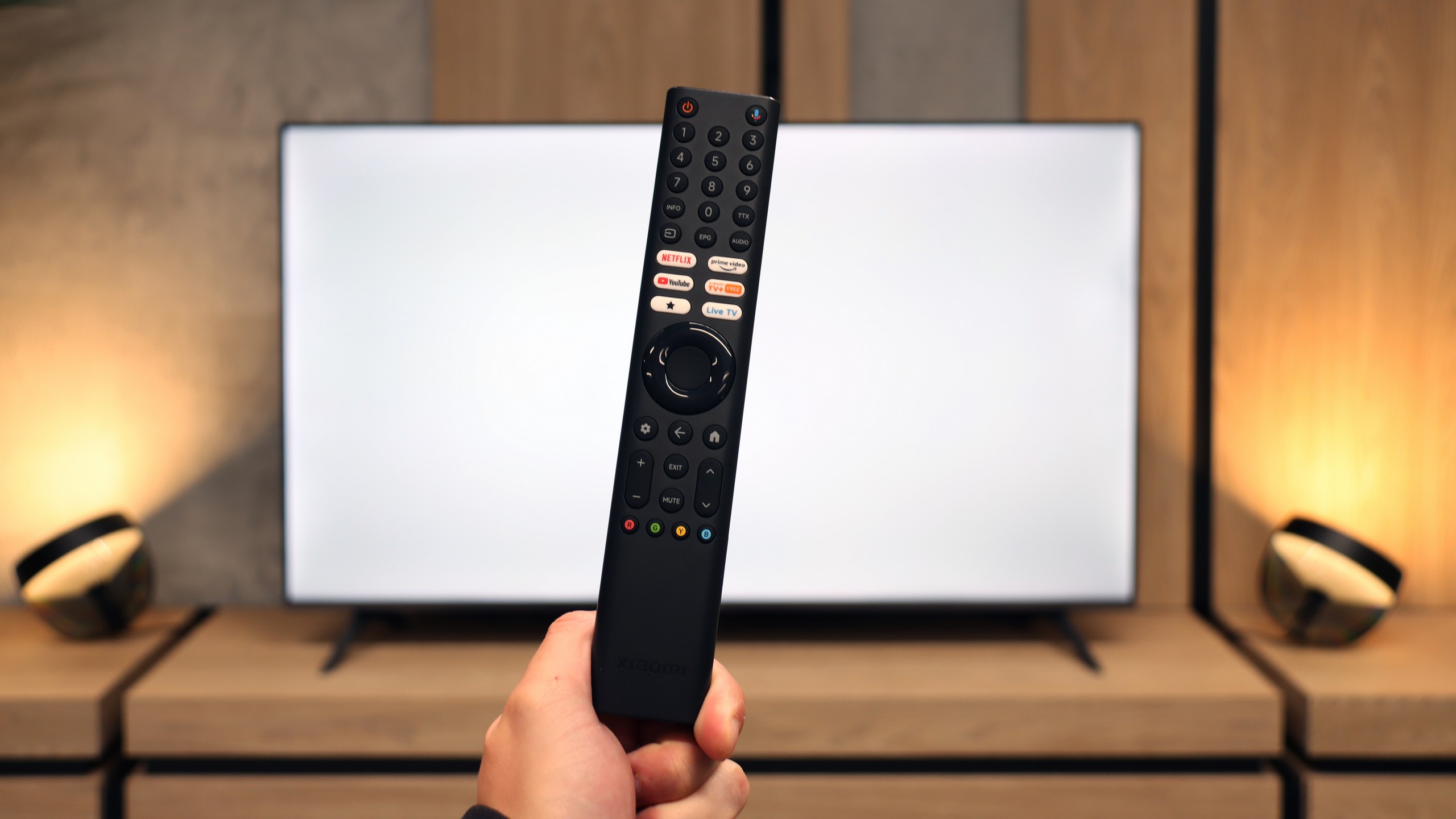
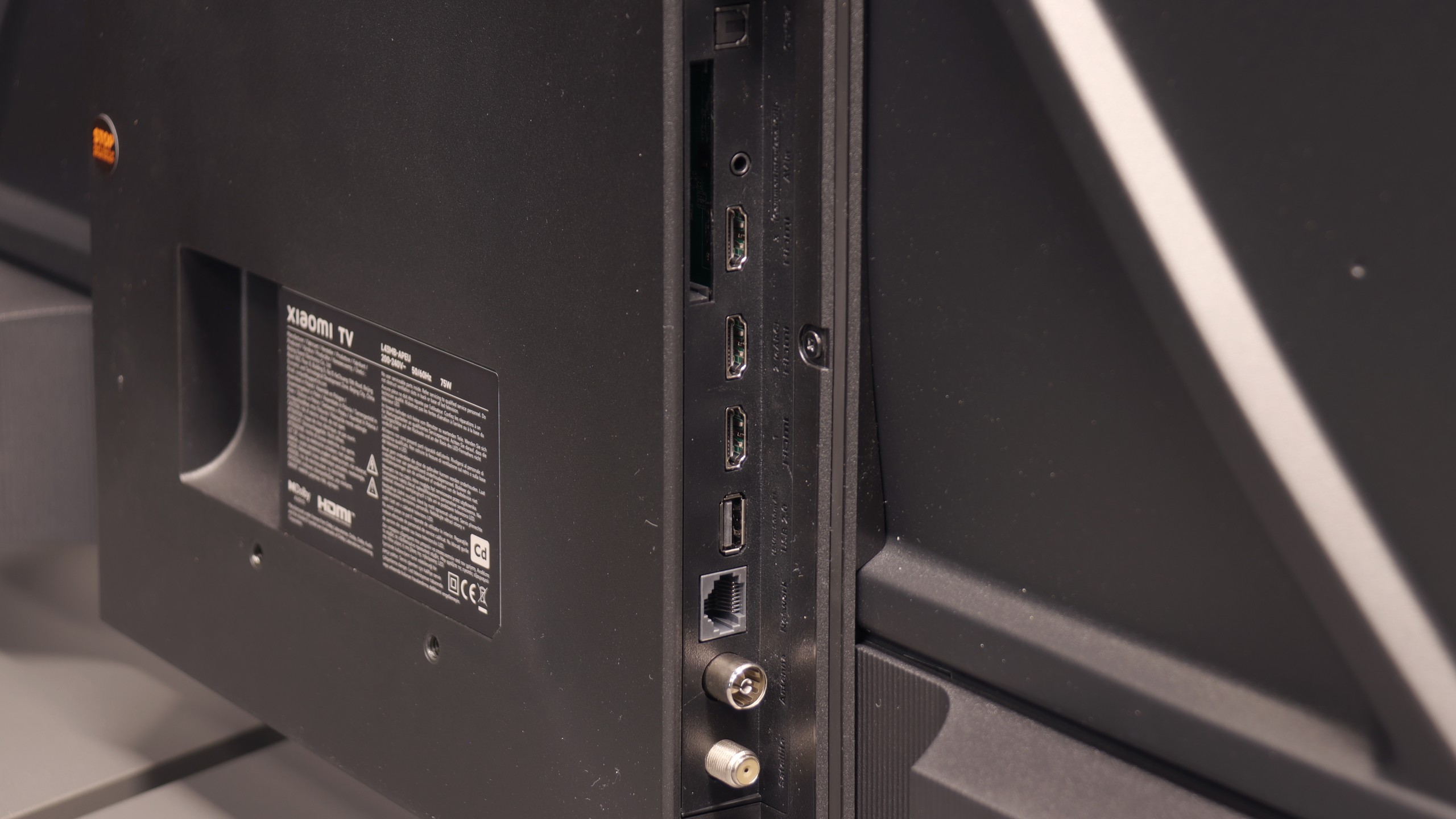
Philips has decided to change its approach to the operating system this year, replacing the previous open system GoogleTV with its own TitanOS. As is often the case with new solutions, TitanOS is grappling with typical teething problems. Currently, it only offers basic apps, and the app store leaves much to be desired, which may disappoint users expecting a rich programme selection. Additionally, the lack of support for AirPlay features and the inability to record to USB are further limitations that could impact the overall user experience.
A notable feature in models with TitanOS is the new remote control, which is very convenient to use thanks to its backlighting. Unfortunately, its wireless operation is not entirely consistent. The hybrid design means that sometimes you have to aim at the television, while at other times you don’t—this depends on which buttons are being used. It’s just plain annoying.
The most important feature of the Philips PUS8359 television is the three-sided Ambilight system, which significantly enhances the viewing experience. The LED lighting placed on the sides and top of the television creates an immersive effect, extending the image beyond the screen and matching colours to the content being displayed. For many users, this is a key element that makes viewing sessions more engaging, and the television stands out from the competition.
SmartTV- Google TV
The biggest plus of the Xiaomi A Pro 2026 is the Google TV system. It gives the television a second life – you can run almost any app on it, from Netflix and YouTube to music services and even lesser-known programs from the Google Play store. We are not limited to what the manufacturer has pre-installed, as is often the case with other budget televisions. On top of that, we have AirPlay, voice search via Google Assistant, and even integration with Gemini. We did experience some small hiccups – for instance, screen mirroring from a laptop didn’t always work – but despite these shortcomings, Google TV is a huge advantage of this model.
Classic TV functions
The Xiaomi A Pro 2026 can be described as a "senior-friendly" television. The large remote with a numeric keypad and a considerable number of physical buttons makes it intuitive to operate. Support for teletext and a clear EPG interface make it easy to use classic television functions. We won’t find many advanced features like USB recording or PiP functionality, but the presence of an analogue headphone jack output can be surprisingly practical for some users. It gives the impression that this is a set of features tailored to the needs of the most traditional viewers.
System stability
However, not everything works as it should. During testing, we encountered annoying system lags, issues with Miracast, and problems when switching audio sources. There were times when a reset of the television was necessary by unplugging it from the power. This only shows that while Google TV offers enormous possibilities, the stability can still be very problematic in such a budget-friendly model.
Playing files from USB
8/10
6.8/10
Supported photo formats:
Maximum photo resolution:

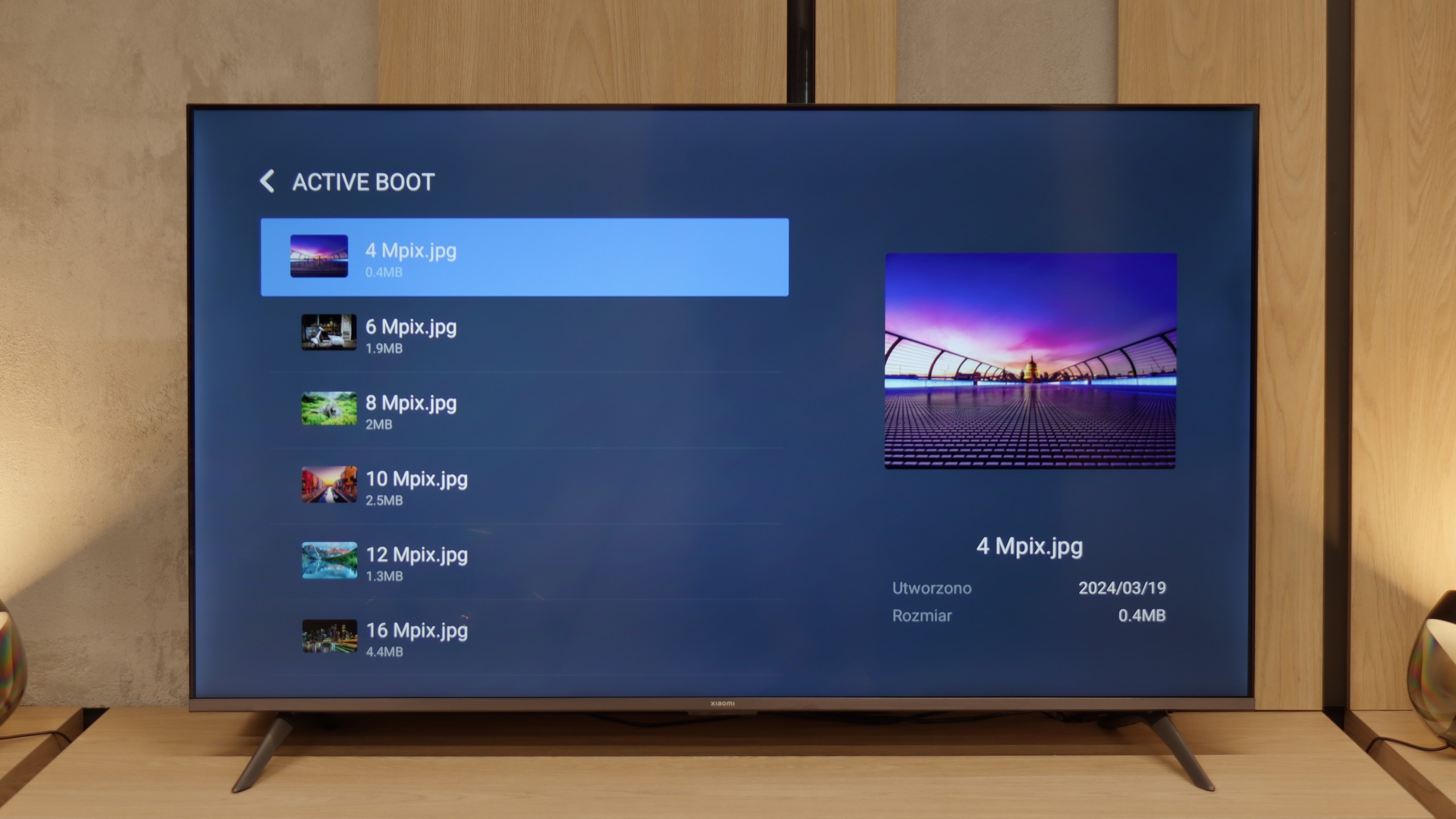
The default media player built into Philips PUS8359 offers quite a wide range of capabilities but also has its limitations. It plays virtually all video formats, with the obvious exception of Dolby Vision and the less obvious .asf, which isn't commonly encountered. However, the problem lies in the lack of H.265 HEVC codec support at high bitrates. When it comes to photos, the player performs adequately, but it lacks support for some popular resolutions and formats like HEIC, used on Apple devices. The player performs best with audio, where it can't be faulted. Unfortunately, due to system limitations, there's no possibility to expand functions, meaning we have to stick with what the manufacturer has prepared.
The built-in media player in the Xiaomi A Pro 2026 is quite a conundrum. On one hand, it plays most popular audio and video formats without major issues. On the other hand, it can struggle with basic things like Polish characters. Files with letters such as ą, ł, ć, or ś in the name often refuse to open or display incorrectly. It looks strange, because we supposedly have codec support, yet the TV simply gets lost on straightforward matters related to the alphabet. Fortunately, this isn’t a huge problem, as thanks to Google TV we can simply install another player, like VLC. At that point, the issue with Polish characters totally disappears and media usage becomes seamless.
Apps
6.2/10
9.6/10














































Sound
6.1/10
5/10
- Maximum volume-81dB
- Dolby Digital Plus 7.1
- Dolby True HD 7.1
- Dolby Atmos in Dolby Digital Plus (JOC)
- Dolby Atmos in Dolby True HD
- DTS:X in DTS-HD MA
- DTS-HD Master Audio
The audio system in the Philips PUS8359 is a standard configuration with 2x10 W speakers, which is unlikely to impress audiophiles. At moderate volume levels (up to 50% of maximum), the sound remains acceptable and does not produce significant distortion. For better audio experiences, we definitely recommend connecting even a simpler soundbar. With support for Dolby Atmos and DTS, the TV works well with external audio systems.
Last year, the Xiaomi A Pro 2025 surprised us with its pretty decent sound for a super budget segment television. Unfortunately, this year's edition – the A Pro 2026, has completely let us down. The sound feels like it's coming from underwater: flat, lacking any bass or depth. The only positive is the wide support for audio formats like Dolby Atmos and DTS:X, but in practice, it doesn't really change much. If you're considering this television, you'll need to factor in a soundbar straight away, as the audio experience without it will be quite disappointing.
Acoustic Measurements
No acoustic data
81dBC (Max)
75dBC


